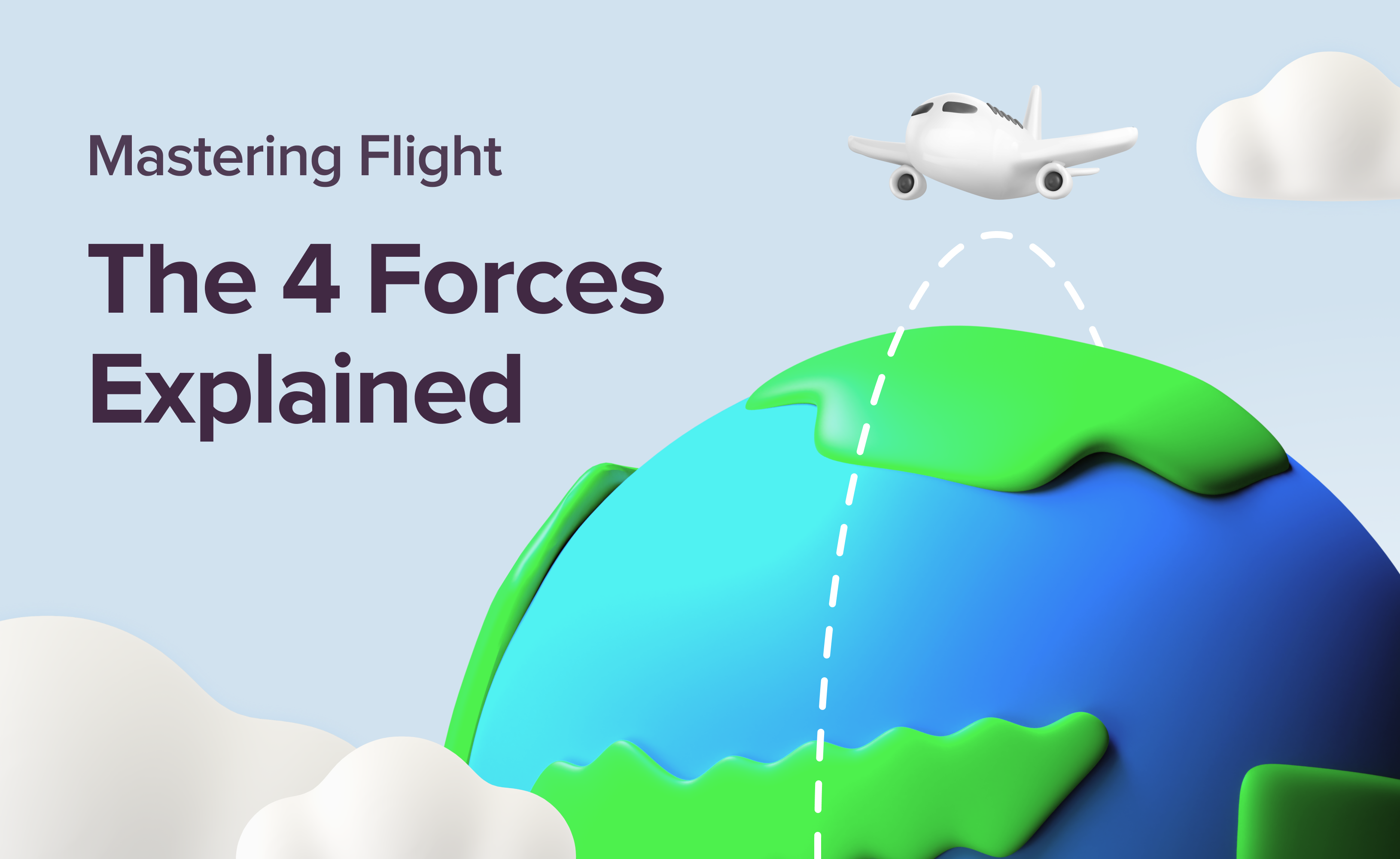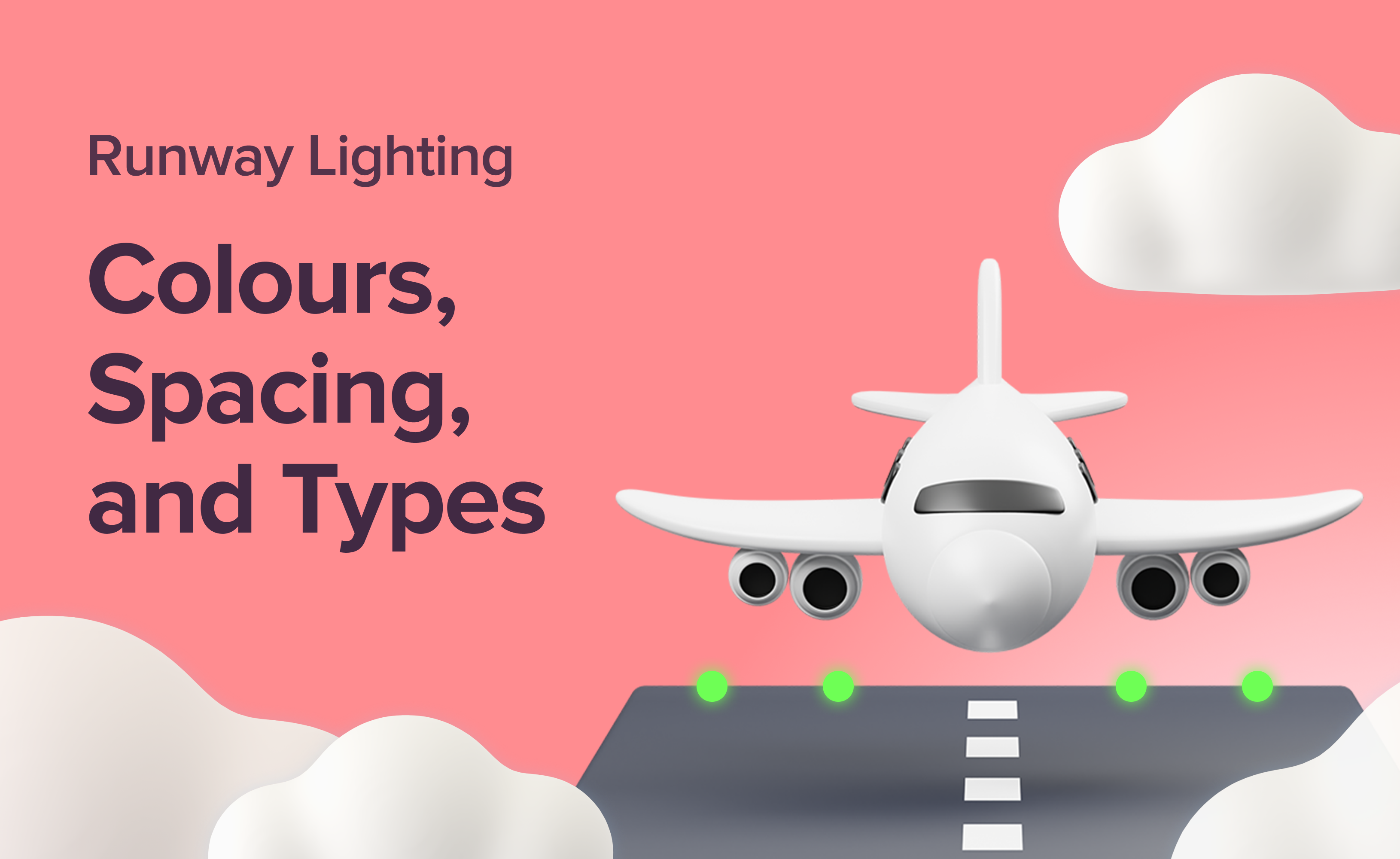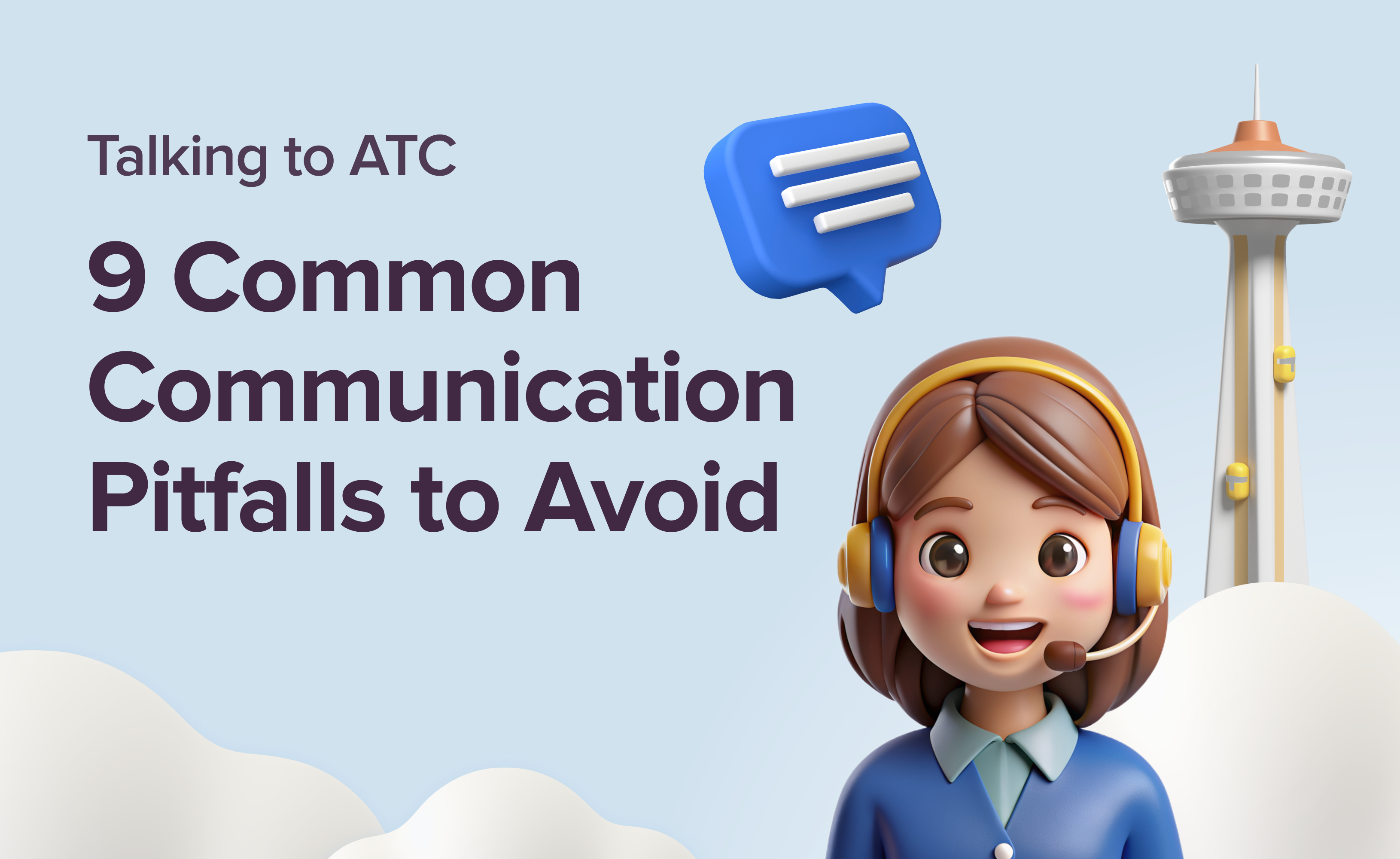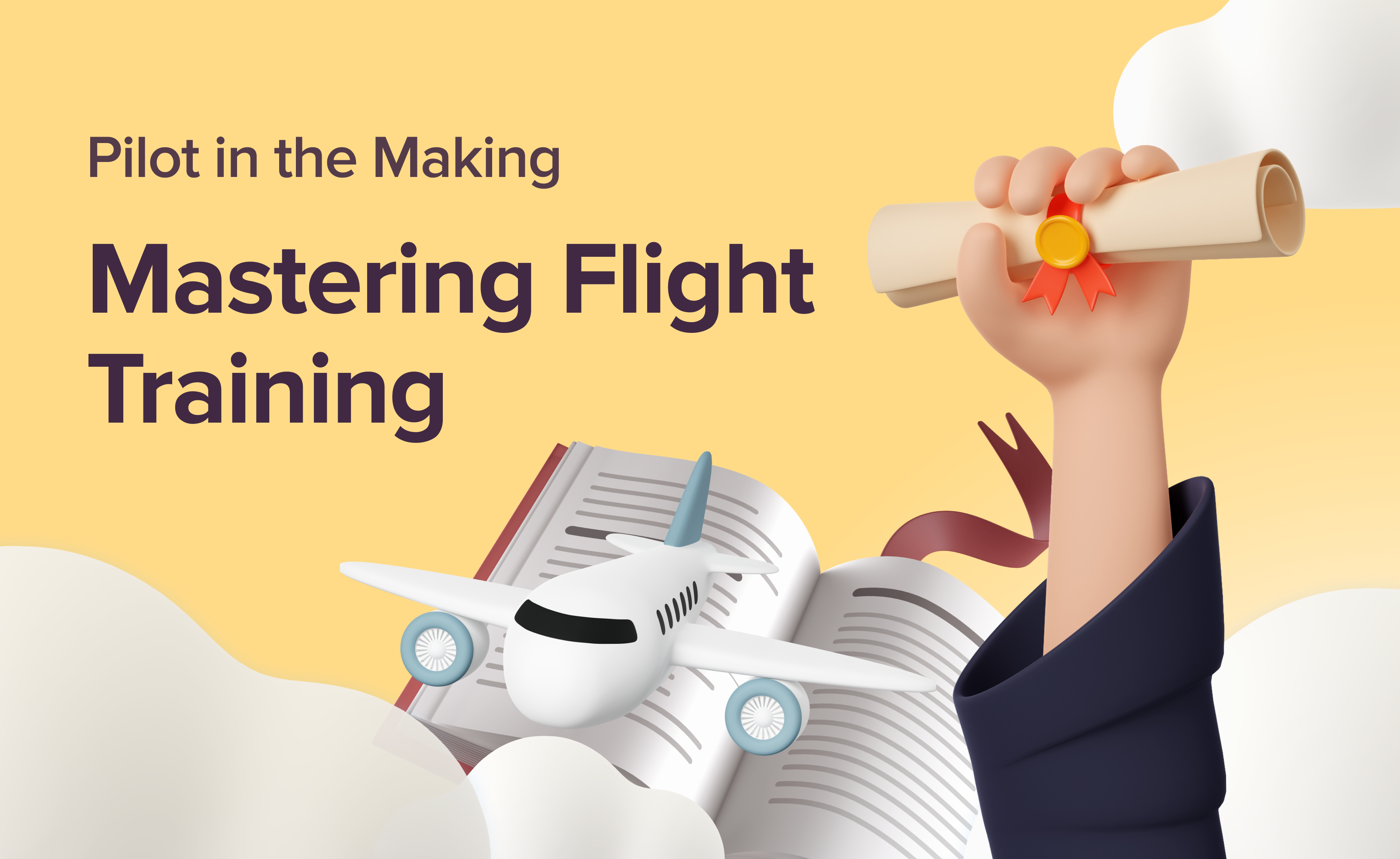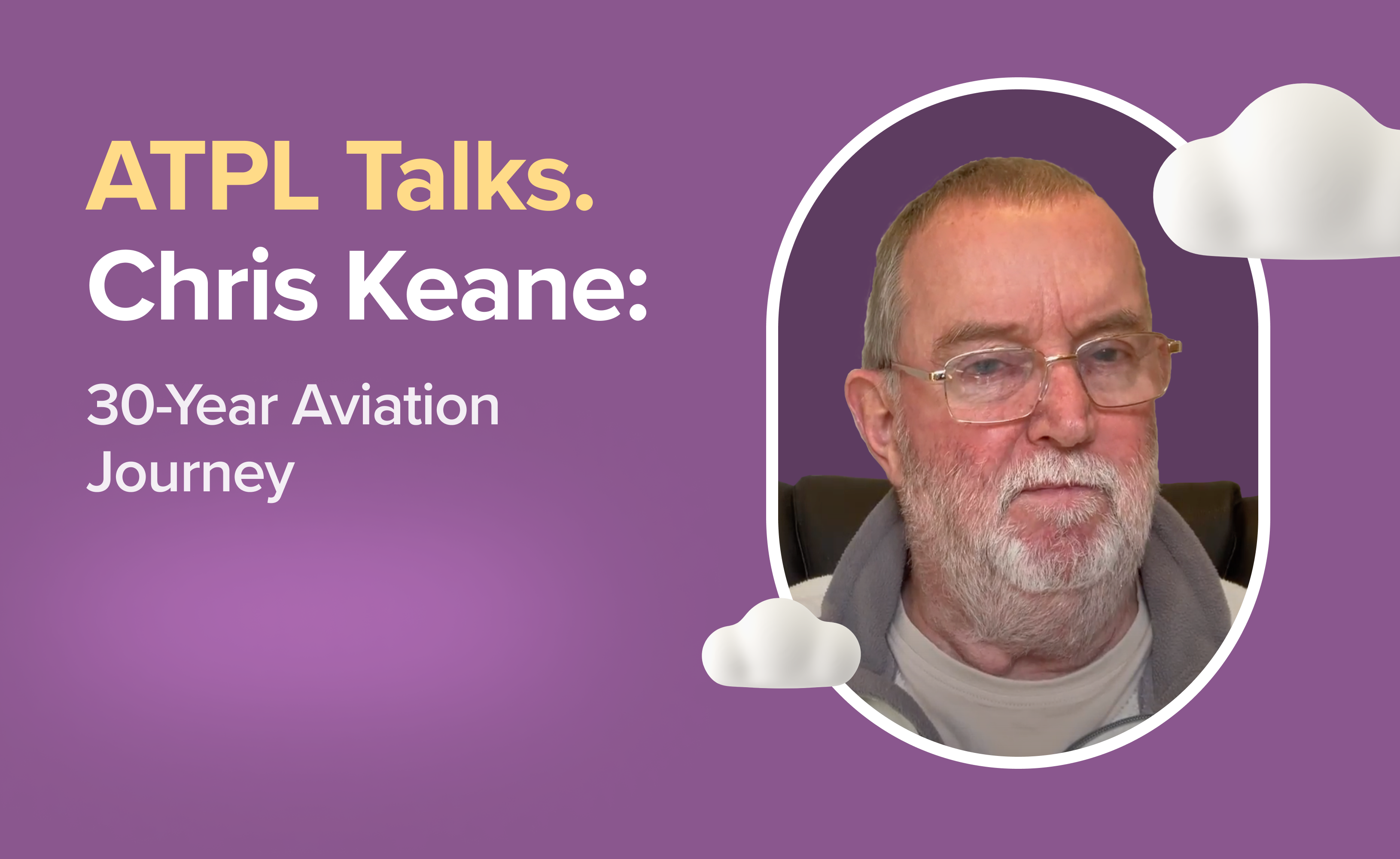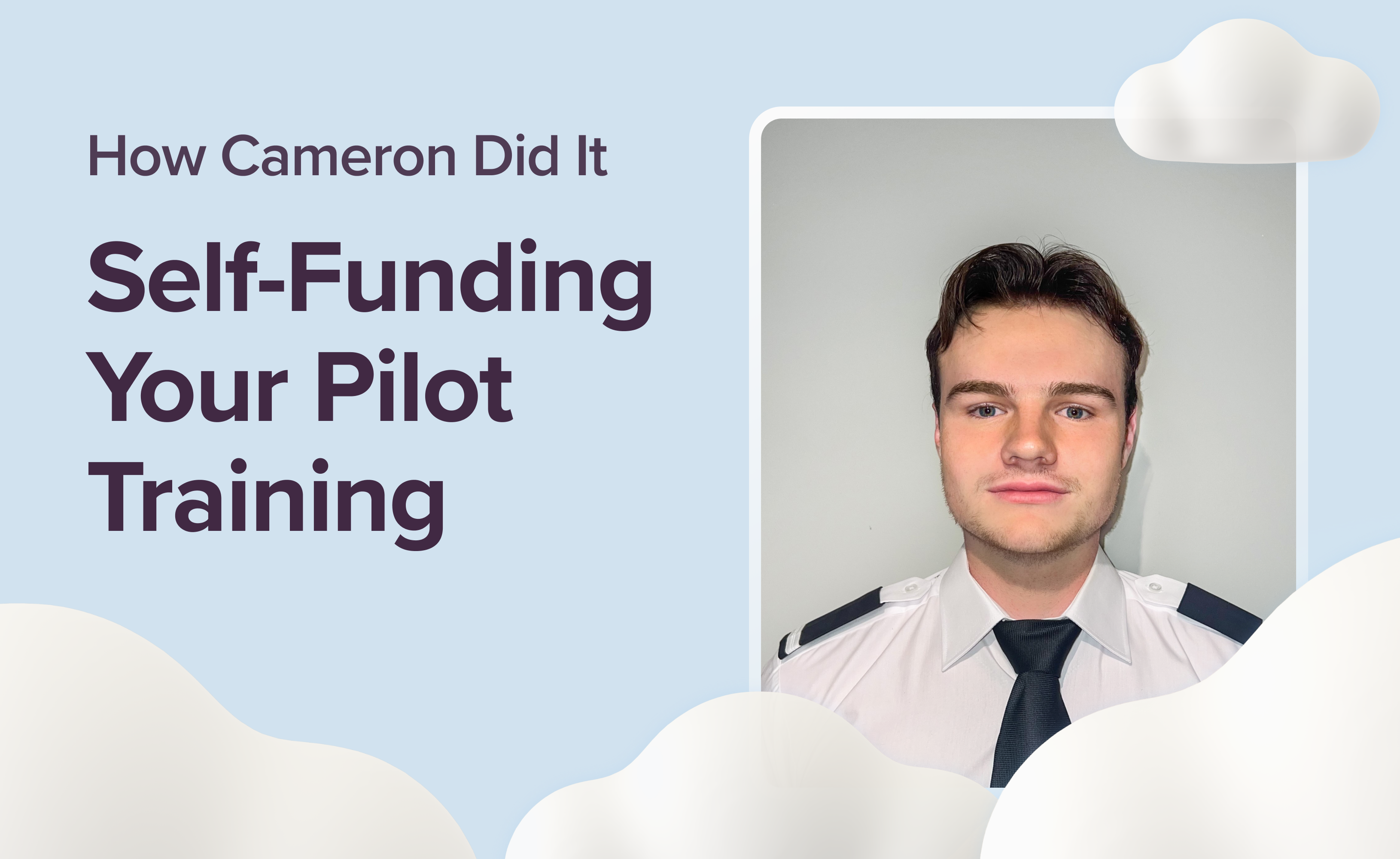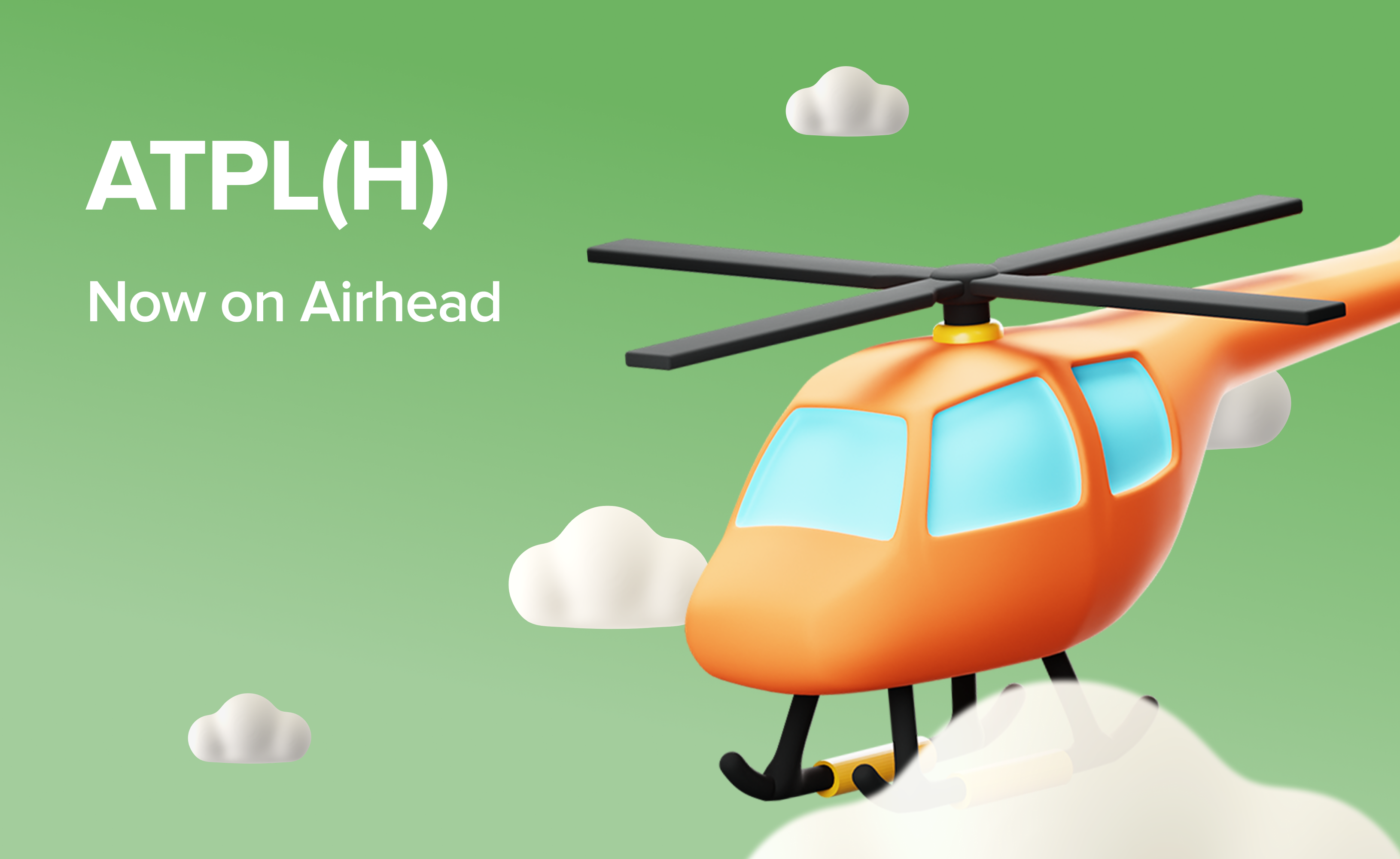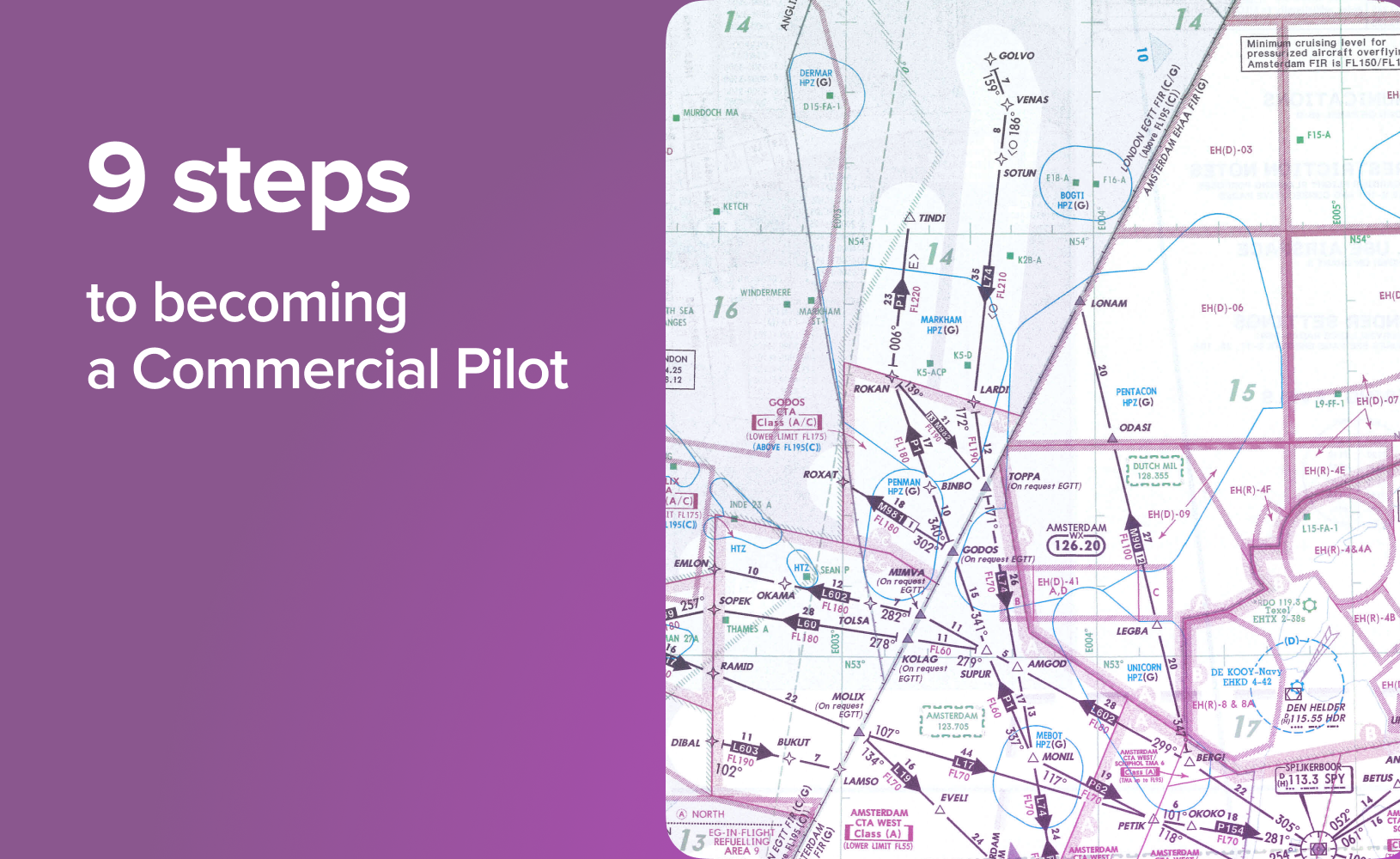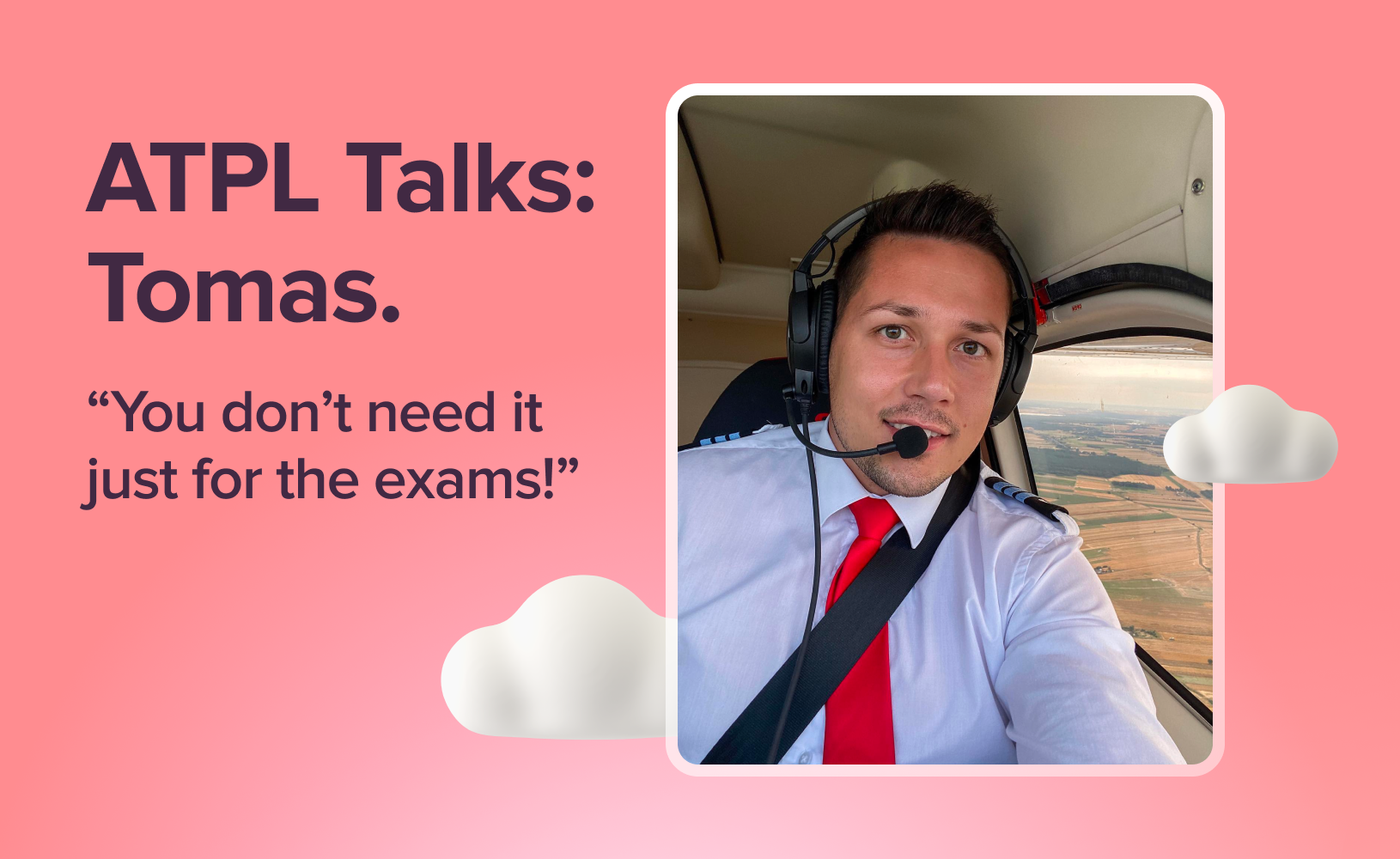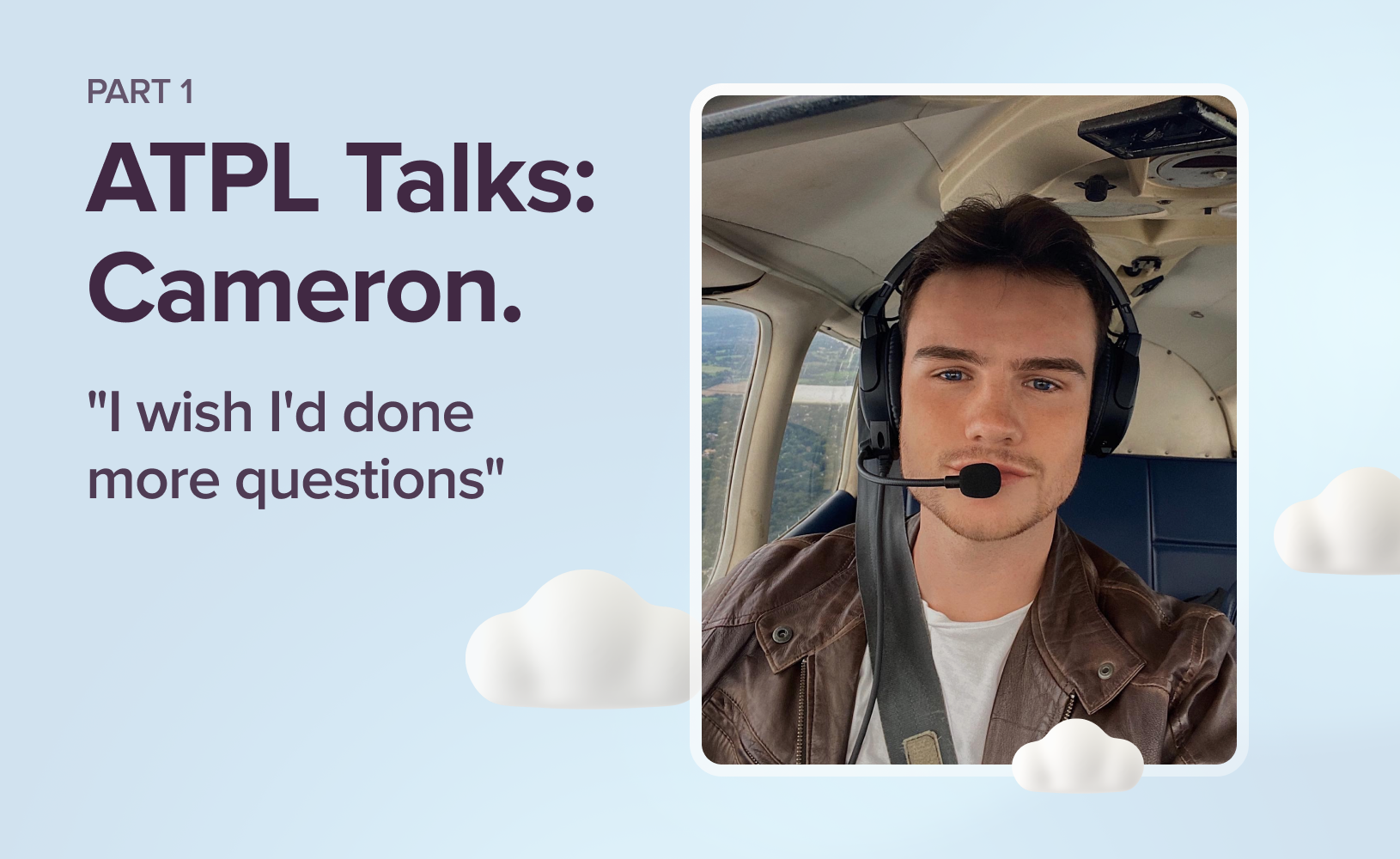ICEFLAGS: Guide to 8 Illusion Types

We start with the following, this article could save your life — seriously. Sounds dramatic, right? But when you’re flying, your senses can play tricks on you in ways you never imagined. One moment, you feel like you’re climbing—except you’re not. Or worse, you think you're flying straight and level when, in reality, you’re in a slow, unnoticed turn.
These aren’t just minor mix-ups. They’re sensory illusions, leading even experienced pilots into dangerous situations.
That’s where the ICEFLAGS framework comes in – a simple way to remember the eight most common illusions in flight. Each can throw you off balance, but knowing what to expect can keep you safe. In this guide, we’ll break down each illusion, how it happens, and—most importantly — how to beat it by trusting your instruments over your instincts.
Let’s dive in. Your safety starts here.

1. Inversion Illusion
The Sensation of Tumbling Backward
Ever felt like you were falling backward on a roller coaster? That’s Inversion Illusion, and it can trick even the best pilots.
This illusion happens when you transition too quickly from a climb to a flight level. Your inner ear expects the climbing sensation to continue, so when the climb suddenly stops, your brain misinterprets it — you feel like you're tumbling backward, even though you're not.
This illusion stems from the vestibular system in your inner ear, which contains three semicircular canals filled with fluid. These canals detect movement in different directions. During an abrupt transition, the fluid in the vertical canals keeps moving, tricking your brain into thinking you’re still climbing.

Effect
Your natural reaction? Push the nose down to “correct” the feeling. But here’s the problem: you weren’t climbing any more — so now, you've unintentionally put yourself into a descent.
Solution
Trust your instruments, not your gut. If your attitude indicator says you're level, believe it.
Make smooth, gradual transitions between climbs and level flight. Avoid sudden control inputs.
Stay ahead of the aeroplane. Anticipate the feeling before it happens so you can override the false sensation logically.
Understand the critical role of human factors in aviation safety and avoid common pitfalls by reading our blog post, The Dirty Dozen: 12 Critical Human Factors.
2. Coriolis Illusion
When Your Inner Ear Leads You Astray
Remember, when you span around in circles and suddenly stop, you feel like you’re still moving. That’s the Coriolis Illusion. In an aircraft, it can cause dangerous disorientation.
Coriolis illusion happens when a pilot moves their head suddenly after being in a prolonged turn. During a continuous turn, the fluid in the semicircular canals of your inner ear stabilises, tricking your brain into thinking you’re no longer turning. If you then move your head — say, to check a chart or switch frequencies — this disrupts the steady fluid and sends a false sensation of tumbling or turning in a completely different direction.

Effect
The sudden feeling of unexpected motion can cause disorientation and dizziness, loss of spatial awareness. Furthermore, it can lead to incorrect control inputs, as the pilot attempts to “correct” a turn that isn't happening.
Solution
Keep head movements minimal in turns—stay focused on your instruments instead of unnecessary head shifts.
If you feel disoriented, trust your attitude indicator rather than your senses.
Use gradual, deliberate movements when adjusting your view inside the cockpit.
Are you aware of the attitudes that can sabotage your flying? Discover 5 risky mindsets every pilot should check.
3. Elevator Illusion
When an Updraft Feels Like a Climb
Imagine flying into poor visibility when suddenly, your aircraft gets pushed upward by an updraft. Your inner ear tells you that you’re climbing —but are you? This is the Elevator Illusion.
The elevator illusion occurs when a sudden vertical acceleration, like an updraft, makes the brain think the aircraft is climbing. This is especially common in conditions of reduced visibility, where the pilot lacks outside visual references.

Effect
When the brain falsely perceives a climb, the natural reaction is to push the nose down to compensate. This can lead to an unnecessary descent, loss of altitude, and possibly being too close to the terrain
Solution
Rely on your instruments — they will indicate whether you are truly climbing.
Be aware of turbulence and weather conditions that may lead to sudden vertical movements.
Make smooth and gradual adjustments rather than responding abruptly to sensations.
Master the art of crosswind landings with our comprehensive guide. Read more and become a confident pilot, Taming the Wind: Crosswind Landings Explained.
4. False Horizon Illusion
When the Sky Plays Tricks on You
Sometimes, the world outside the cockpit doesn’t look quite right. Maybe it’s a cloud formation, city lights, or even sloping terrain that appears to be the horizon — but isn’t. Say hello to the False Horizon Illusion, where visual cues mislead your sense of level flight.
This illusion happens when a pilot mistakes an incorrect visual reference for the actual horizon. Cloud formations can create a false horizon, city lights can mislead with a false level, and mountain ridges at night can give the illusion of level flight, all contributing to spatial disorientation.

Effect
Aligning an aircraft with a false horizon can lead to several hazardous consequences. Pilots may inadvertently introduce unintended bank angles, resulting in disorientation, particularly during nighttime or in conditions of poor visibility. Critically, if this illusion remains unnoticed and uncorrected, it can ultimately lead to a loss of aircraft control.
Solution
Always verify your attitude indicator before making adjustments.
Cross-check multiple references — don’t rely on a single visual cue.
At night or in low visibility, prioritise instrument flight.
Understand the key differences between Visual Flight Rules and Instrument Flight Rules. Read our blog “Beyond the Clouds: VFR vs. IFR” to learn more.
5. The Leans
When a Turn Feels Like Straight and Level
Imagine you enter a turn so gently that you barely feel it. Then, when you level the wings, your brain tells you that you’re banking in the opposite direction — even though your instruments say you’re straight and level. That’s the Leans, one of the most common illusions pilots experience.
The leans happen when your inner ear fails to detect a slow, gradual turn. Since there’s no sudden acceleration to trigger your balance system, your brain assumes you’re still flying straight.
When you finally correct the turn and level out, your inner ear now detects movement in the opposite direction, creating the false sensation that you’re banking. This can make you overcorrect — potentially leading to a dangerous turn in the wrong direction.

Effect
Pilots feel like they are banking when they are level. Instinctive corrections can cause an unintended turn or spiral. As a result, it may lead to spatial disorientation, especially in instrument conditions.
Solution
Trust your attitude indicator, not your body’s sensations.
Make smooth, coordinated turns and avoid abrupt corrections.
In IMC (Instrument Meteorological Conditions), focus on your instruments and avoid relying on "seat-of-the-pants" flying.
Beyond the Routine: Understanding Aviation Checklists covers the importance of checklists and how to use them effectively. Discover best practices for checklist management, learn how to avoid common errors, and understand why these procedures are vital for every flight.
6. Autokinesis Illusion
When a Stationary Light Starts Moving
You’re flying at night, scanning the dark horizon. Off in the distance, you see a single light. It seems to drift slightly, so you instinctively adjust your course to track it — but the light never actually moves. Autokinesis is a classic night-flying trap, that can make you chase ghosts in the sky.
It happens when staring at a stationary light in the dark tricks your brain into thinking it’s moving. The lack of surrounding visual references causes your eyes to make tiny, involuntary movements. Without other visual cues, your brain misinterprets these eye movements as the light shifts position.

Effect
Pilots may unknowingly steer toward or away from the light. It can create false tracking of objects, leading to unnecessary course deviations. At worst, it can result in loss of situational awareness and disorientation.
Solution
Avoid staring at a single light for too long — keep scanning different areas of the sky.
Use instrument references rather than relying on outside visual cues in low-visibility conditions.
Remind yourself that isolated lights in the distance aren’t always moving.
Test your decision-making skills with 8 challenging scenarios. Read more in our blog and see how you'd react: Decision-Making: 8 Key Scenarios for Pilots.
7. Graveyard Spiral
The Illusion That Can Pull You In
You’re flying in poor visibility, relying on your instruments. At some point, you enter a gentle turn without noticing it. Since the turn is gradual, your inner ear doesn’t detect the motion — so your brain still thinks you’re flying straight.
After a while, you notice your altitude is dropping, so you instinctively pull back on the yoke. But instead of levelling out, your turn tightens, and your descent speeds up. You’ve just entered the Graveyard Spiral, a deadly illusion that has claimed the lives of many pilots.
The graveyard spiral happens when your brain fails to detect a slow turn. If you’re in IMC (Instrument Meteorological Conditions) or flying at night without clear visual references, your body doesn’t register the motion.
As you remain in the turn, you start losing altitude due to the natural aerodynamics of banking flight. When you try to correct by pulling back, you’re only tightening the spiral, increasing G-forces and accelerating your descent.

Effect
The graveyard spiral is a leading cause of spatial disorientation accidents, particularly for pilots without proper instrument training. Pilots feel like they are flying straight when they are actually turning. Instinctive corrections (pulling back) worsen the spiral. If not corrected in time, the increasing descent rate leads to a fatal crash.
Solution
Always trust your instruments over your body’s sensations.
If disoriented, cross-check attitude, heading, and turn coordinator instruments.
Level the wings before attempting to correct altitude loss.
Make smooth control inputs — overcorrecting can worsen the situation.
Take care of yourself, take care of your flying. Discover the importance of pilot mental wellbeing in our latest blog post, Fly Well, Be Well: Prioritising Pilot Mental Wellbeing.
8. Somatogravic Illusion
When Acceleration Feels Like a Climb
You push the throttle forward for takeoff, and as the aircraft surges ahead, you feel like you’re pitching up more than you are. If you aren’t careful, you might push the nose down to compensate—even though you’re already in level flight.
This is Somatogravic Illusion, an acceleration-induced trick that can lead to dangerously low attitudes, especially during takeoff or go-arounds.
Somatogravic illusion happens when rapid acceleration affects your inner ear. When you accelerate quickly — whether during takeoff, a go-around, or a sudden increase in power — your vestibular system interprets this as a backward tilt, making you feel like you’re climbing steeply. It is particularly dangerous during black hole approaches (over featureless terrain at night) or low-visibility take-offs.

Effect
The somatogravic illusion causes pilots to perceive a steep climb when none exists. This can lead to a dangerous overcorrection, pushing the nose down and potentially resulting in unintentional low flight or CFIT (Controlled Flight Into Terrain), especially during critical phases like take-offs and go-arounds when proximity to the ground is greatest
Solution
Trust your attitude indicator and VSI (Vertical Speed Indicator).
Avoid making sudden pitch corrections based on feeling alone.
Be extra cautious when applying high-power settings in IMC or at night.
Don't let common pitfalls derail your flight training. Discover 9 crucial mistakes to avoid and stay on track to earning your wings.

Airhead's Takeaway
Even the best pilots can fall for the illusions. The key to avoiding them? Let your instruments guide you — because your brain can’t always be trusted. We've opted for a unique approach to our ending. Instead of a typical summary, you'll find a detailed ICEFLAGS chart. This visual tool presents all eight illusion types, allowing for a swift and effective review, and serving as a valuable aid in your ongoing study of spatial disorientation.
OPTICAL ILLUSION | CAUSE | EFFECT | SOLUTIONS |
Inversion | Brain misinterprets that the body is climbing due to an abrupt shift in flight transition | Pilot feels they’re tumbling backward, which can make them pitch down further | Practice gentle and gradual transitions as opposed to sudden ones |
Coriolis | Brain misinterprets that the body is moving in a particular direction but is now stationary | Pilot feels dizzy and as if they’re tumbling, leading to loss of control | Relaxed head movements |
Elevator | Brain misinterprets a sudden push due to an updraft as a climb (usually due to poor visibility) | Pilot may feel they’re ascending; they may switch to descent to maintain altitude | Confirm altitude using instruments |
False Horizon | Brain misinterprets random spots (like a cloud or a set of streetlights) for an actual horizon | Pilot is misled about the horizon and adjusts their aircraft’s attitude incorrectly | Checking instruments |
Leans | Brain fails to detect a gradual turn and perceives straight and level flight when turning | Pilot unknowingly enters a turn and may instinctively roll back, leading to disorientation | Rely on instruments rather than physical sensations |
Autokinesis | Brain misinterprets that a stationary light is moving (usually a night flight illusion) | Pilot misjudges the movement and speed of their aircraft | Avoid staring at a single point; scan different areas of the sky |
Graveyard Spiral | Brain fails to register a turn | Pilot goes on continuous turning, and eventually to a spiralling descent | Checking instruments, executing smooth inputs |
Somatogravic | Rapid acceleration tricks brain into thinking it’s a climb | Pilot may try to pitch down to maintain level, which may lead to quick descent | Checking instruments, avoiding rapid acceleration or deceleration |



